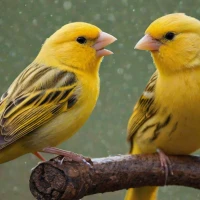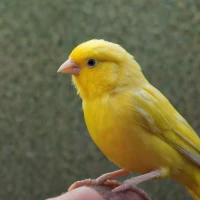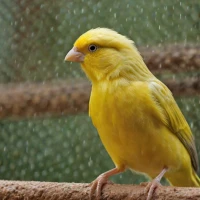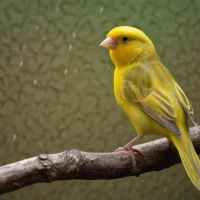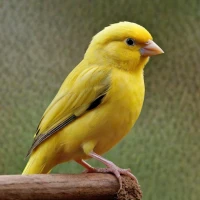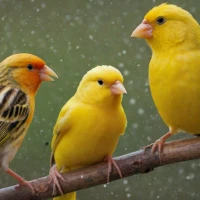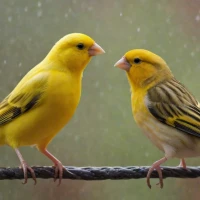The Magical Journey of Breeding Red Canary Birds
Ever since I was a kid, my fascination with birds has been unwavering. I remember being about eight years old when my uncle Charlie, a lover of all things feathered, first introduced me to the mystical beauty of red canaries. It was a hot summer day, the kind that makes you feel like you’re melting from the inside out. Uncle Charlie handed me a small, delicate bird — a fiery-red canary that seemed almost too beautiful to be real. The way its tiny heart beat against my palm, oh boy, I was hooked!
Understanding the Red Canary: Nature’s Marvel
To really get into breeding red canaries, you need to appreciate what makes these birds so extraordinary. Red canaries are a hybrid species originally derived from the Yellow Canary and the Red Siskin. Yup, that’s an interesting fact for you! Their vibrant color isn’t a gift from the gods but a result of diligent breeding and selective pairing. That beautiful red? It’s a labor of love, patience, and a touch of science.
The process involves carefully selecting birds with the most intense red feathers and pairing them. Sounds easy, right? Ah, if only it were that simple!
The Basics of Breeding Red Canaries
One of the most exciting (and slightly nerve-wracking) parts of breeding red canaries is setting up the perfect environment. You need to mimic their natural habitat as closely as possible. I’m talking about humidity, temperature, and even lighting. Just imagine, you’re basically playing house for a couple of diva birds who have extremely specific needs. It’s like setting up a luxury hotel for them.
You’ll need proper nesting materials, often natural fibers like coconut coir or soft grasses. These materials provide a snug, cozy environment for the soon-to-be little canary chicks. Honestly, seeing those first eggs in a carefully constructed nest is something—I get goosebumps every time!
Nutrition: The Secret Sauce
Let’s talk turkey—or rather, canary seed. Good nutrition is the backbone of successful breeding. A well-balanced diet comprising seeds, fresh greens, and a splash of carotenoid-rich fruits like cherries or pumpkins can make all the difference. It’s like feeding your kids spinach, hoping they’ll grow up strong and smart. Believe me, your canaries will thank you for it with vibrant, red feathers.
Interestingly, the red pigmentation can actually change based on their diet. Ever noticed how flamingos get their pink color from the shrimp they eat? Canaries are kind of like that. Oh, and don’t forget a splash of nutrients; calcium supplements are non-negotiable for egg production and chick development.
Pairing and Mating: Playing Matchmaker
I’ve seen some pretty awkward canary dates in my time—birds squinting at each other from opposite ends of the cage, unimpressed. But when the chemistry is right, oh, it’s almost magical! Choosing the right pair is like being a matchmaker. You’ll want to look for birds that are healthy, of good size, and boast vibrant feathers.
Typically, introducing the male into the female’s cage during the early morning seems to work best. They’re more, um, equitable before breakfast. Watch them closely. If they start preening each other, you might just hear wedding bells.
The Waiting Game: Eggs and Hatching
Once they’ve hit it off, your female canary will lay eggs within a week or so, usually four or five at a time. Talk about efficiency! The incubation period lasts about 14 days. During this time, make sure you’re part detective and part butler—keeping an eye on the eggs without disturbing the nest too much.
Ah, the anticipation when those first little peeps come from within the eggshells—it’s like awaiting the birth of royalty. Baby canaries, or chicks, are completely dependent on their parents for food and warmth for the first couple of weeks.
Chicks Growing Up: A Rollercoaster of Emotions
Here comes the rollercoaster part. Raising chicks can be stressful yet incredibly rewarding. As they grow, you’ll need to ensure they get the right mix of soft food, like egg food and soaked seeds. Gradually, they’ll start eating on their own and develop their signature red feathers.
That first fluttery attempt at flight—goodness, it’s heartwarming and terrifying all at once. And before you know it, you’ve got a cage full of gorgeous red canaries, ready to start the cycle anew.
Challenges and Joys: A Personal Reflection
I won’t sugarcoat it—breeding red canaries is a challenging endeavor. You’ve got to deal with dietary concerns, health issues, and the delicate art of pairing. There’ve been times I’ve been up all night, fretting over a sick chick or an uncooperative pair. But you know what? The joy of seeing those vibrant red feathers sparkle in the sunlight makes it all worth it.
Overall, being a red canary breeder is a unique blend of science and art. It’s about connection and understanding. It’s a journey thing, one filled with ups and downs—but also immeasurable rewards. So go on, give it a try! Thank you for reading 😊 Fly high and dream big!
If you wanna dive deep into this world, remember, there’s no such thing as too much knowledge. Happy birding! 🐦



